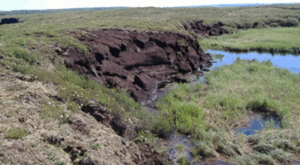Soutenance de thèse
Laetitia Parc
LMD
Role of rain in CO2 exchanges at the ocean-atmosphere interface
Résumé
The ocean plays an important role in the global carbon cycle by absorbing about a quarter of the carbon emitted by human activities every year. Exchanges between the ocean and the atmosphere are governed by various chemicophysical and biological processes. Among these processes, rain has been overlooked in past studies due to its intermittence. However, it alters the physical and biogeochemical properties of the ocean surface, and thus promotes the exchange of carbon dioxide (CO2) at the air-sea interface. Rain impacts this carbon exchange in three different ways. First, as it falls on the ocean surface, it generates turbulence that facilitates the renewal of water masses in contact with the atmosphere. Secondly, it dilutes the seawater at the surface, altering the chemical equilibrium within the oceanic carbon cycle and enabling seawater to absorb greater quantities of CO2. Finally, raindrops directly inject CO2 absorbed during their fall into the ocean through wet deposition. The objective of this thesis is to quantify the impact of rain on the oceanic CO2 sink at different spatiotemporal scales. A first global estimation of the resultant of these three effects on the global ocean uptake has been done using reanalysis and observational (in-situ and satellite) products over the period 2008 to 2018. This study shows that rain increases the oceanic carbon sink by 140 to 190 million tonnes of carbon per year, representing an increase of 6 to 8% in the 2.36 billion tonnes absorbed annually by the oceans. The main regions affected by these processes are the tropics, the storm track regions and the Southern Ocean. However, variations in the global estimates are due to large uncertainties on the rain rates themselves and on the associated ocean’s surface response. A more detailed study of the sensitivity of the impact of rain to rainfall rates is carried out at regional (using radar measurements) and global scales. An increase of 15% in the combined effect of rain-induced turbulence and dilution is assessed using satellitebased precipitation estimates instead of reanalysis rain data, the former being characterized by a greater contribution of heavy rainfall to the total rainfall volume. Finally, these fine-scale processes are integrated into the CO2 flux calculations of a global ocean biogeochemistry model (GOBM) forced by atmospheric reanalysis. It allows us to take into account the response of surface biogeochemistry to the rain impact on CO2 exchanges at the air-sea interface. In this framework, the total rain effect leads to an increase of 0.9% in the global ocean sink over the period 1980 to 2022. This significant attenuation of the adjustment in ocean carbon uptake is linked to the accumulation of CO2 absorbed through these processes in the ocean surface layer. This result is directly linked to the capacity of the ocean general circulation model to transfer CO2 in its interior.
Informations supplémentaires
Lieu
École normale supérieure – PSL
24 rue Lhomond – aile Erasme
Salle Claude Froidevaux – E314
Visio
https://cnrs.zoom.us/j/95575453263?pwd=YBkCWNC9xuonGfYBMpKgacSIp3VtFq.1
Composition du jury
- Pascale Bouruet-Aubertot (examinatrice)
- Roland Séférian (rapporteur), Matthieu Lengaigne (rapporteur)
- Laure Resplandy (examinatrice)
- Laurent Bopp (directeur de thèse)
- Hugo Bellenger (co-encadrant)
- David T. Ho (invité)
- Jacqueline Boutin (invitée)






